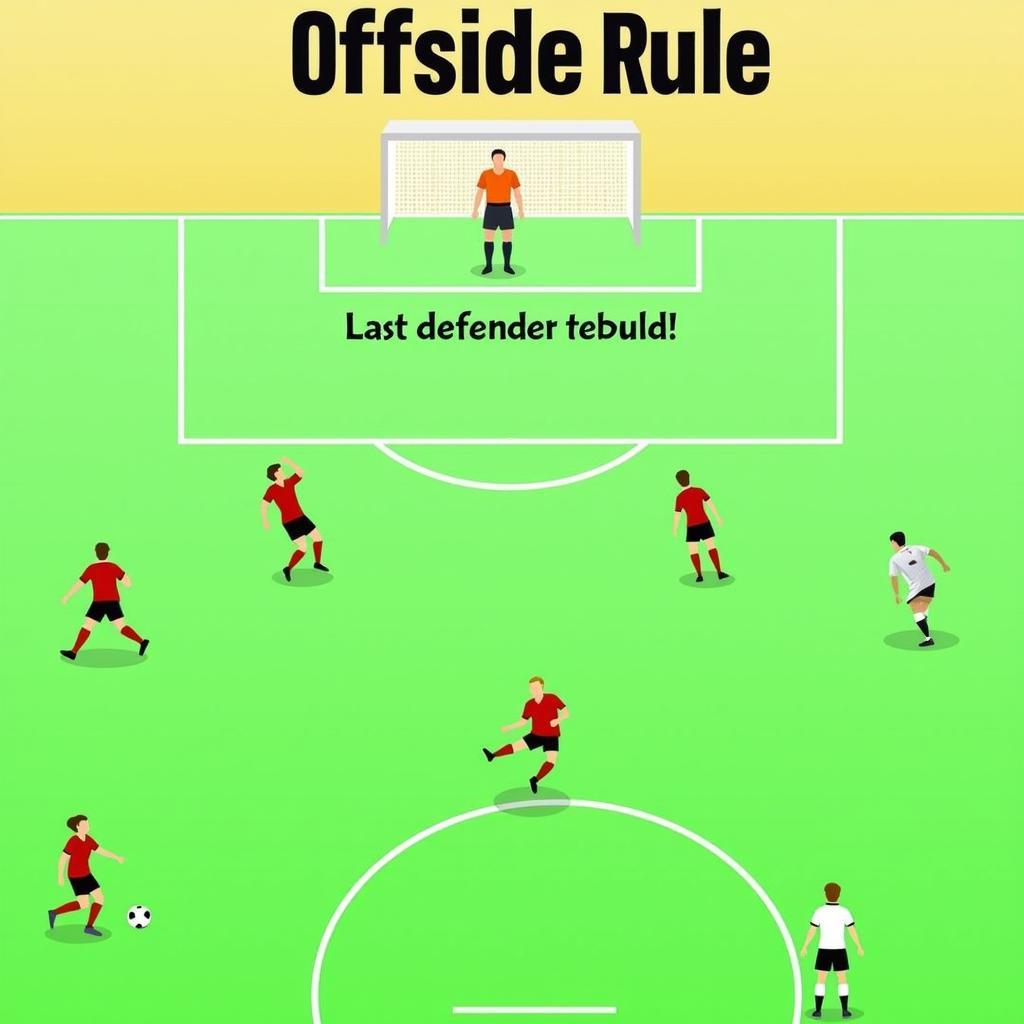The Ultimate Football Rules: A Fan’s Guide to Understanding the Beautiful Game
October 21, 2024Football, the global phenomenon that unites millions under its banner, isn’t just about the goals, the tackles, or the breathtaking skills on display. At its core, it’s a game bound by a set of rules that orchestrate the flow, fairness, and sheer excitement of the sport. Whether you’re a seasoned enthusiast or a curious newcomer eager to grasp the fundamentals, understanding the Ultimate Football Rules is key to truly appreciating the beautiful game.
Decoding the Basics: Players, Equipment, and the Field of Play
Before delving into the intricacies of the game, let’s establish a foundation with the basic elements. Each team fields 11 players, including a goalkeeper who’s the only one allowed to handle the ball within their designated penalty area. The game unfolds on a rectangular pitch, marked with distinct lines demarcating boundaries, penalty areas, and the halfway line.
The Laws of the Game: Navigating the Flow and Fouls
At the heart of football lie 17 laws meticulously crafted by the International Football Association Board (IFAB) to ensure fair play and consistent application across all levels. These laws govern everything from the start and stop of play, methods of restarting the game, to determining offside infractions and fouls committed.
Kick-Off: Setting the Ball in Motion
A kick-off from the center spot initiates each half and restarts the game after a goal is scored. The opposing team must remain in their own half until the ball is touched or played by the kicking team.
Offside: A Tactical Tightrope
The offside rule, arguably the most debated, aims to prevent players from gaining an unfair advantage by loitering near the opponent’s goal. A player is deemed offside if, at the moment the ball is played to them by a teammate, they are closer to the opponent’s goal line than both the last defender and the ball itself. However, there are exceptions, notably if the player receives the ball directly from a goal kick, corner kick, or throw-in.
 Visualizing the Offside Rule
Visualizing the Offside Rule
Fouls and Misconduct: Maintaining Order on the Pitch
Fouls are actions deemed unfair by the referee, typically involving physical contact or unsportsmanlike behavior. Depending on the severity and intent, fouls can result in direct free kicks, penalty kicks awarded for offenses committed within the penalty area, or disciplinary cards – yellow for cautions and red for expulsions.
Mastering the Intricacies: Throw-Ins, Corner Kicks, and Goal Kicks
Beyond the core gameplay, understanding the nuances of restarting play after various scenarios is crucial.
-
Throw-ins: Awarded to the opposing team when the ball entirely crosses the sideline, throw-ins require players to use both hands to throw the ball over their heads from behind the point where it exited play.
-
Corner Kicks: Awarded to the attacking team when the ball crosses the goal line after last touching a defender, corner kicks are taken from the corner arc closest to where the ball left the field.
-
Goal Kicks: Awarded to the defending team when the ball crosses the goal line after last touching an attacking player, goal kicks are taken from anywhere within the goal area.
Beyond the Basics: Embracing the Spirit of the Game
While the ultimate football rules provide a framework for fair play, they don’t encompass the intangible essence of the sport. Respect for opponents, referees, and the decisions made is paramount. The true beauty lies in the sportsmanship, camaraderie, and sheer passion that transcends cultural and linguistic barriers, unifying fans in a shared love for the game.
 The Spirit of Football: Joy and Camaraderie
The Spirit of Football: Joy and Camaraderie
Frequently Asked Questions About Football Rules
1. Can a goalkeeper score a goal?
Yes, a goalkeeper can score a goal, either from a long kick or by joining the attack during open play. However, they must adhere to the same rules as outfield players when outside their penalty area.
2. What happens if a game ends in a tie?
Depending on the tournament or league regulations, a tied game can result in a draw, extra time, or a penalty shootout to determine the winner.
3. How long is a standard football match?
A standard football match consists of two halves of 45 minutes each, with a 15-minute halftime break. The referee adds stoppage time at the end of each half to compensate for delays caused by injuries, substitutions, or other stoppages.
4. What is the difference between a direct and an indirect free kick?
A direct free kick allows the kicker to score directly from the kick, while an indirect free kick requires another player to touch the ball before a goal can be scored.
5. Can a substituted player return to the game?
In most professional leagues, once a player is substituted, they cannot return to the game. Some competitions allow for re-substitutions under specific circumstances.
Exploring the Depths of Football Knowledge
For those eager to delve deeper into the intricacies of football rules and strategy, our website offers a wealth of resources. Whether you’re interested in understanding the latest rule changes, analyzing tactical formations, or simply indulging in your passion for the game, we’ve got you covered.
- Discover the exciting world of 808 facemask football and enhance your game-day experience.
- Explore the strategic depth of the rank card game and test your football knowledge.
- Relive the thrill of the NFL with nfl nerf flag football, a fun and engaging way to enjoy the sport.
- Unleash your inner tactician with the madden db editor and create your dream football scenarios.
Connect with Us: Your Gateway to Football Passion
Join our vibrant community of Yamal fans and fellow football enthusiasts. Share your insights, ask questions, and engage in discussions about the beautiful game. Contact us at Phone Number: 0915117113, Email: [email protected] or visit us at Address: To 3 Kp Binh An, Phu Thuong, Vietnam, Binh Phuoc 830000, Vietnam. We are available 24/7 for any assistance you need!